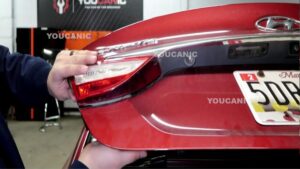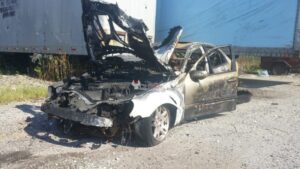Change Your own Oil With these Ten Easy Steps
Is your car due for an oil change? Typically, your car will need an oil change every 3,000-5,000 miles. It is important to keep track of when you last had your vehicle serviced to keep it running smoothly.
These ten easy steps will help you change your oil with ease. We will walk you through how to change the oil and oil filter in your car. While it is possible to change the oil by using an oil extractor, we will not be covering that in this guide.
What you will need
- Oil filter wrench
- Oil drain pan
- Funnel
- Work Gloves
- Ramps
- Jack stands
- Ratchet
- Metric Sockets
- Wheel Chocks
- Torque Wrench
- Paper towels
Step-by-Step Guide
- Place the car in Park. Turn the ignition off and remove the key. Then, lift the car. This can either be done using jacks, or by driving your vehicle onto ramps if you have them. To prevent your car from rolling away, place something behind the rear tires of your car
👍Pro Tip: Make sure you are using the proper jack points under your vehicle. Consult your owner’s manual for the right location.
2. Remove the Splash Shield under your car. Modern cars have a cover under the engine that needs to be removed before you can access the oil filter and drain plug. It is held in place with 10mm bolts or plastic screws. Sometimes, you have a combination of screws and plastic retainers. Remove all of these bolts to fully remove the splash guard. Place the bolts and the splashguard in a safe place for later.
Remove all of these bolts to fully remove the splash guard. Place the bolts and the splashguard in a safe place for later. 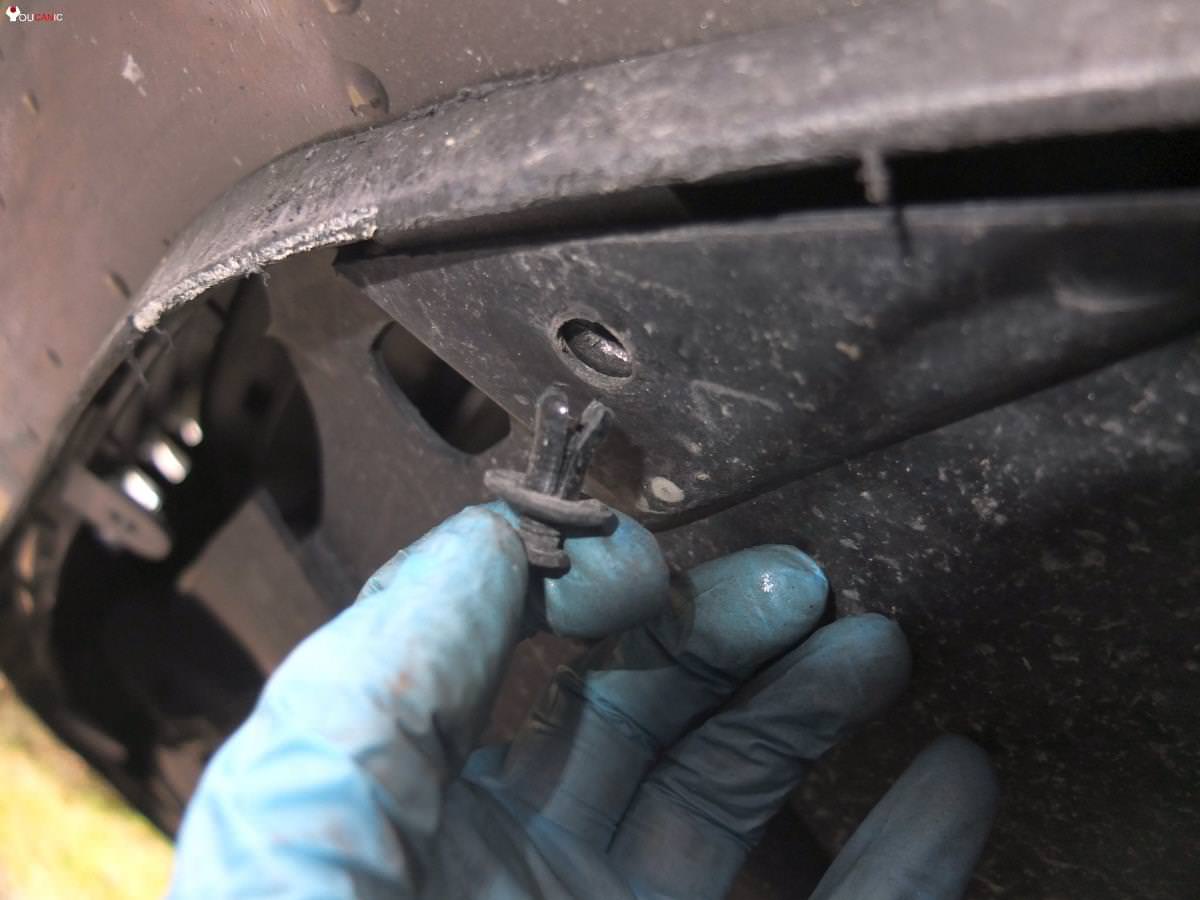
3. Before you remove the oil drain plug, slide an oil drain pan under the oil bolt.
👍Pro Tip: Do not place the drain pan directly under the drain plug because the oil will drain out and not down.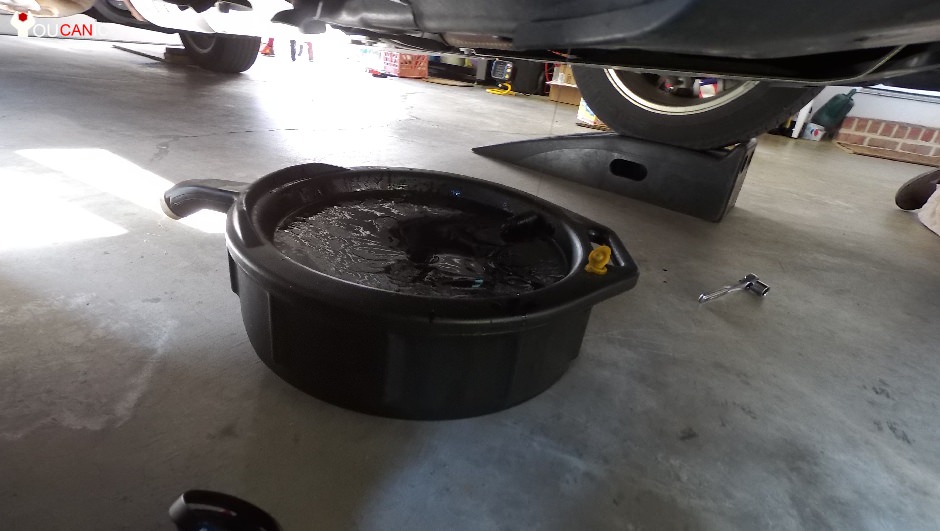
4. Remove the oil drain plug. Loosen the oil drain bolt by turning it counterclockwise. If removing the oil drain bolt is extremely difficult, ensure you are not turning the bolt in the wrong direction.
5. Drain engine oil. If the engine is still hot, be careful because the engine oil will also be hot. It can cause burns if it comes in contact with your skin.
Carefully remove the oil drain plug and let the engine oil drain for several minutes.
6. Change the Drain Plug Washer. Inspect your oil drain plug; it should have a copper washer. The old washer must be replaced at every oil change to prevent leaks.
7. Screw the drain plug back in by hand first to avoid cross-threading. Use a torque wrench to tighten the drain plug. Do not use a breaker bar to tighten the drain plug. The recommended torque should be in your owner’s manual. If it is not, call your dealer to get the correct value.
8. Place the drain pan under the oil filter and use an oil wrench to remove the oil filter housing. Remove the old filter, and clean the oil filter housing with a paper towel before inserting the new filter. Pre-oil your new filter to prevent the engine from running dry at startup. Place a little bit of oil in the gasket. This will make it easier to remove during your next oil change and will help prevent oil leaks. Screw the new oil filter in place. In some models, the oil filter may be located in the engine bay, such as BMW, Mercedes, Dodge, and Chrysler.
9. Add engine oil. Do not start the vehicle until you add the required amount of engine oil. Open the hood and find the oil cap in your engine bay. Clean the area around the oil cap with a cloth before you open it to prevent debris from entering the oil reservoir. Remove the cap and place a funnel to add oil to your engine. Add oil a little at a time to prevent overfilling.
10. Check the oil level using the dipstick. If the engine has just been running or you have just added oil, you should wait at least 5 minutes for the oil to settle in the oil pan so that you can take an accurate measurement. Wait a few minutes and recheck the engine oil level. If the oil is near the “MAX” line on the dipstick, you have added the perfect amount of oil.
What type of engine oil do I need?

The easiest way to find what oil your car needs is to look at the oil cap or owner’s manual. The oil viscosity is usually printed on the cap. If you can’t find it on the cap, it will be in the “Mantinence and Specifications” section of your owner’s manual.
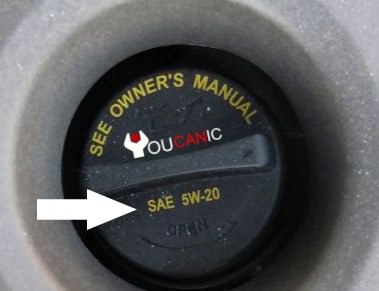
Here, you will see the recommended oil type, the standards the oil should meet, and the quantity needed. API oil specifications requirements are also printed on the bottle. Ensure you get the correct oil quantity in your owner’s manual.
You can choose between synthetic and conventional motor oil. We recommend synthetic oil over conventional oil. If you use full synthetic motor oil, you can go longer between oil changes, while if you use conventional oil, you will have to change the oil every 3,000 miles.
Frequently Asked Questions
Should I change the engine to hot or cold?
There is a lot of discussion on whether you should change the oil when the engine is hot or cold. If you try to change the engine when the oil is hot, you risk burning yourself. It is okay to change the engine oil if the oil is warm. The thing to keep in mind is that you may have some residue oil left. You don’t need to worry about a minimal amount: let the engine sit overnight to get as much of the old oil out. Raise the car, but do not start the engine. Remove the drain plug and let the oil drain. This is the best method to remove as much old oil as possible.
How much does it cost to change the oil?
An oil change can range from $19.99 to $150. A four-cylinder engine that takes 5w30 or 0w20, such as a Honda Civic or Ford Focus, will only cost you about $20. A Mercedes-Benz E-Class that takes 8.5L synthetic oil and fleece oil filter may cost as much as $150 at the dealer. Two main factors that play a role in engine oil cost are the oil type (synthetic, synthetic blend, conventional) and oil quantity required. Oil filter quality and how easy it is to remove may also affect the price of an oil change.
How often should I change the engine oil?
Conventional Oil – Every 3,000 miles
Synthetic Blend – Every 5,000 miles
Synthetic Oil – Every 7500-10,000 miles (verify in your owner’s manual)
Can I change the engine oil at home?
Yes, you can. Follow this guide. We hope that once you go over all the steps, you will feel confident about the procedure to change the engine oil at home.
Can I change the engine oil once a year?
While the oil age can factor in the engine oil life, you must pay closer attention to the miles driven. If you drive minimally (under 5,000 miles) and use synthetic oil, you should be okay with changing the oil once a year.
Can I change the engine oil but not the filter?
No. You should change the oil filter at the same time that you change the engine oil. Oil filters do not last forever; if they are not changed regularly, they will not filter the oil properly or, even worse, clog. In this case, the oil may bypass the oil filter altogether, which you don’t want as it may shorten the engine’s life.
Is it necessary to change the engine oil every year?
Yes. Most drivers should change the engine oil at least twice, if not more, per year, depending on the oil type. If you put about 15,000 miles per year, the national average in the US, you should change the engine oil at least twice yearly—assuming that you are using synthetic oil and a good oil filter. If you use conventional oil, you should change the engine oil every 3,000 miles or, in this case, five times per year. How do you know if you need conventional oil or synthetic? Look it up in your owner’s manual. Look at the bottle of oil you purchase; it will say conventional or synthetic. It’s okay to switch to synthetic oil. Most modern cars use synthetic oil.
What is the recommended frequency for changing engine oil?
Everyone makes different oil change interval recommendations varying from 3,000 to 10,000 miles. Here is the general rule: Change the engine oil every 3,000 miles if using a conventional oil type. When using synthetic oil, change it every 7,500 miles, and your car should continue to run smoothly. Use a quality oil filter when going for extended oil change intervals.
Should I change the engine oil before or after storage?
Change the engine oil after storage. Oil can lose its lubricating properties when sitting for an extended period. If your car has been sitting for a long time, change the engine oil.
What happens if I don’t change the oil?
You are shortening the life of your car. Sludge may build up, the engine may start to knock, and, most importantly, bearings will wear much faster. You may not notice any symptoms immediately, but you are causing premature wear to your car engine.
How much oil do I need to add?
Check your owner’s manual. Every car has a different capacity. There is no correlation between the number of cylinders and oil capacity. Some six-cylinder engines require only four quarts, while others may require eight quarts. Always check the owner’s manual. You do not want to overfill or underfill.
What should I do with my old oil?
You should take your old oil to your local oil recycling plant or to your local auto parts store. Most auto parts stores will take your old oil and car batteries and safely dispose of them for you.



